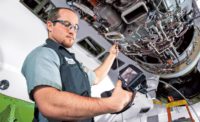For a robust quality environment to exist and prosper there has to be teamwork. However, there are misunderstandings about the team of teamwork. For many organizations, it means launching and maintaining teams for isolated projects to improve various outputs.
Teamwork, however, is much more than a few isolated teams. James Cash (JC) Penney said “the best teamwork comes from people working independently toward one goal in unison.”
In this current environment, it might seem strange to say but some organizations have not studied the topic of teams and teamwork enough, and, consequently, there is considerable confusion surrounding this topic. If this were not so, why have there been so few companies adopting the teachings of recognized quality experts like Dr. W. Edwards Deming who has given society a lot of empirical
data on this subject?
Teamwork must be seen as a strategic milestone in the evolution toward a quality environment. Traditional organizations hinder, if not obstruct, achievement of the desired total quality state. Interestingly, however, these organizations tend to remain confused that their meager efforts are virtually worthless or, at minimum, not achieving the desired results.
If the desired state of teamwork is understood, then the organization can establish meaningful action plans. The organization should state in its quality mission its intent and how this will be achieved. The organization’s goals should also be reviewed repeatedly as their journey to a robust quality environment continues.
Teamwork, like customer satisfaction, is something the organization must strive to achieve. It also doesn’t happen by command or within a short time. Teamwork comes with maturity. Certainly, launching teams and supporting these initiatives is part of the maturity cycle. But true teamwork takes place after significant and sustained effort. It requires a defined action plan specifically directed toward its accomplishment.
Management must consider what is necessary for teamwork to be achieved. Part of this consideration is the recognition of the things that limit, hinder, or obstruct its realization.
Organizational limitations can be summarized as being the traditional structure, styles, and practices that must be changed if a robust quality environment is to be achieved. Also, obstacles are also created by management systems and processes that hinder collaboration by teams and individuals. There are many such examples, even if subtle. If anyone doubts or questions this, think about how the traditional organization plans, budgets, communicates, delegates, develops its human resources, and compensates its associates.
There is much management has to change to make true teamwork a reality and a major part of the quality environment. Using teams to identify customer needs and the processes to meet or exceed those requirements provides a way to start the functional units of the organizations toward greater collaboration. Similarly, cross-functional teams can be used to address organizational issues and improvement opportunities.
It is important to recognize that teams are not an end to themselves. Teams are a vehicle to take an organization toward the goal of true teamwork and a robust quality environment. As Andrew Carnegie said, “Teamwork is the ability to work together toward a common vision. The ability to direct individual accomplishments toward organizational objectives. It is the fuel that allows common people to attain uncommon results.”



